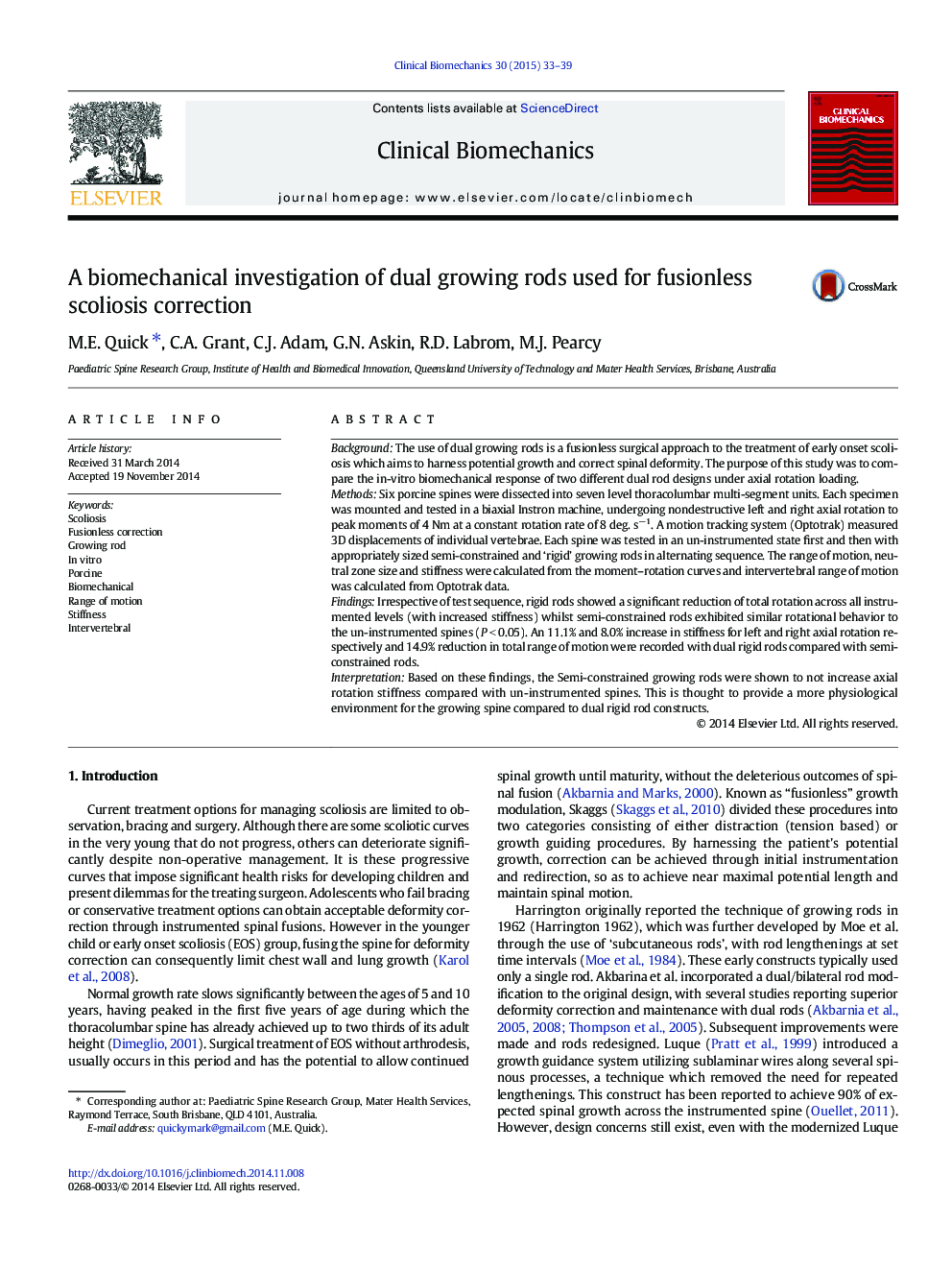| Article ID | Journal | Published Year | Pages | File Type |
|---|---|---|---|---|
| 4050258 | Clinical Biomechanics | 2015 | 7 Pages |
•The biomechanical characteristics of multi segment unit (MSU) porcine spine were studied in axial rotation.•Two commercially available growing rod designs used to manage early onset scoliosis (EOS) were compared.•The newer semi-constrained growing rod maintained intervertebral rotation similar to the un-instrumented spine.
BackgroundThe use of dual growing rods is a fusionless surgical approach to the treatment of early onset scoliosis which aims to harness potential growth and correct spinal deformity. The purpose of this study was to compare the in-vitro biomechanical response of two different dual rod designs under axial rotation loading.MethodsSix porcine spines were dissected into seven level thoracolumbar multi-segment units. Each specimen was mounted and tested in a biaxial Instron machine, undergoing nondestructive left and right axial rotation to peak moments of 4 Nm at a constant rotation rate of 8 deg. s−1. A motion tracking system (Optotrak) measured 3D displacements of individual vertebrae. Each spine was tested in an un-instrumented state first and then with appropriately sized semi-constrained and ‘rigid’ growing rods in alternating sequence. The range of motion, neutral zone size and stiffness were calculated from the moment–rotation curves and intervertebral range of motion was calculated from Optotrak data.FindingsIrrespective of test sequence, rigid rods showed a significant reduction of total rotation across all instrumented levels (with increased stiffness) whilst semi-constrained rods exhibited similar rotational behavior to the un-instrumented spines (P < 0.05). An 11.1% and 8.0% increase in stiffness for left and right axial rotation respectively and 14.9% reduction in total range of motion were recorded with dual rigid rods compared with semi-constrained rods.InterpretationBased on these findings, the Semi-constrained growing rods were shown to not increase axial rotation stiffness compared with un-instrumented spines. This is thought to provide a more physiological environment for the growing spine compared to dual rigid rod constructs.
